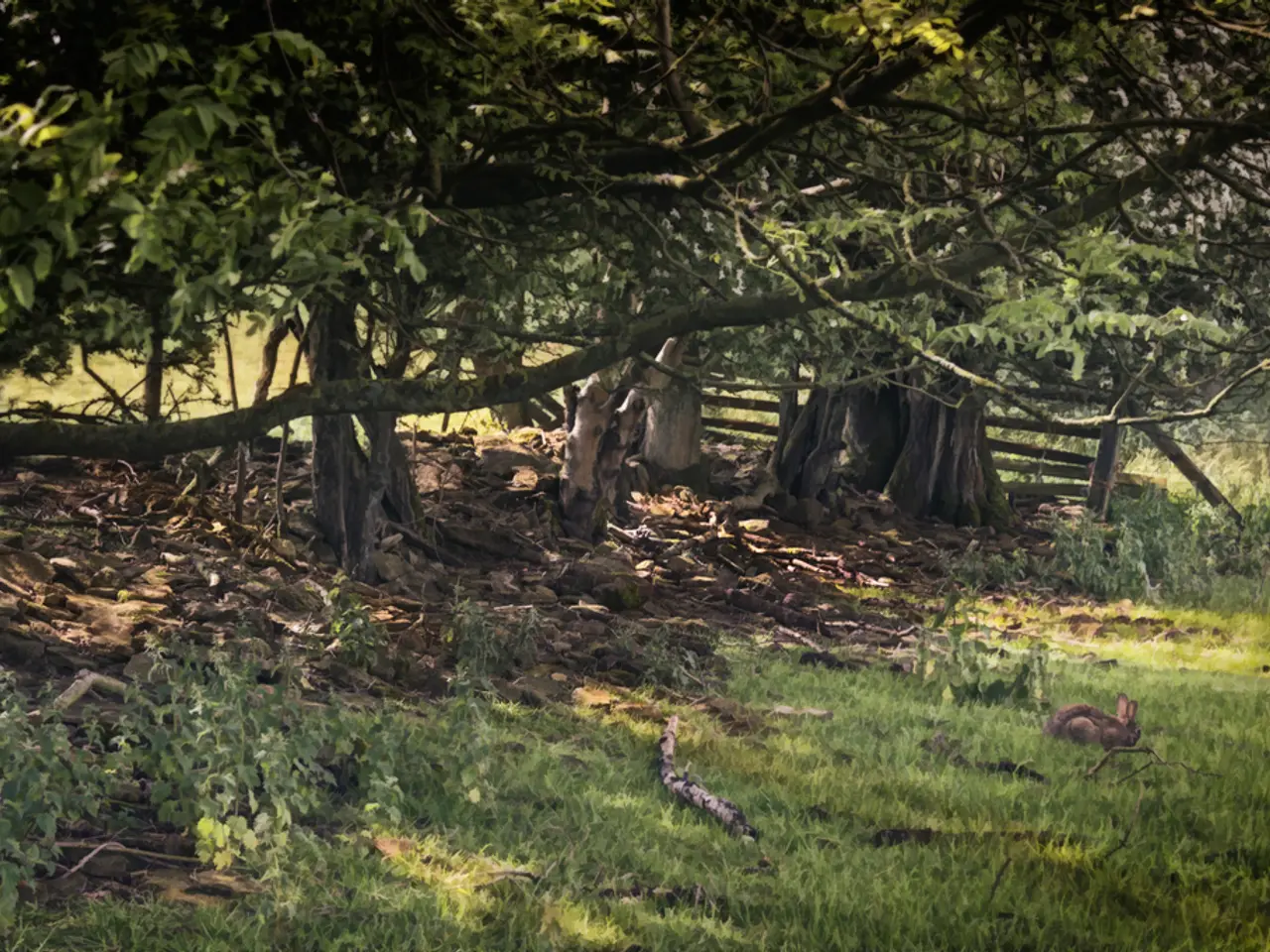Employing Burlap During Garden Seasonal Upkeep
In the vibrant world of horticulture, burlap has proven itself to be a valuable ally for gardeners, especially during the spring season. This humble, natural fabric offers a myriad of benefits, making it an eco-friendly and versatile choice for various garden applications.
One of the most practical uses of burlap is as a natural weed barrier. By laying it beneath gravel or mulch, gardeners can block sunlight and prevent unwanted weed growth while allowing water and nutrients to pass through. This organic barrier, which lasts approximately 3 to 5 years, not only improves soil health but also adds organic matter, supports beneficial insects, and reduces moisture evaporation [1][3].
Burlap's breathable nature makes it an ideal choice for seasonal plant protection. Wrapping sensitive plants and shrubs in burlap can shield them from winter wind, heavy snow, or harsh sunlight, ensuring their survival and smooth transition into spring. The fabric's breathability ensures that plants still receive sufficient air and moisture [4][5].
Moreover, burlap plays a crucial role in maintaining balanced soil moisture. As a biodegradable material, it contributes nutrients to the soil as it breaks down, fostering microbial activity and increasing earthworm populations. It also helps prevent soil evaporation without suffocating the soil [1][3].
When it comes to maintenance, burlap's longevity can be extended by avoiding high-traffic areas and synthetic geotextile fabrics in those locations. When used as a weed control measure, expect replacement every 2 to 3 years, depending on conditions. Reusing staples or securing devices can also help save on installation labor [1][3].
Burlap's eco-friendliness is another compelling reason for its popularity. It serves as a sustainable alternative to synthetic weed barriers, breaking down naturally and minimising plastic pollution. It works best for smaller garden beds and less trafficked gravel areas, reducing environmental impact compared to polypropylene or polyester landscape fabrics [1][2][3].
Beyond its practical uses, burlap's rustic aesthetic lends itself to a variety of garden crafts and decorations, providing both functional and ornamental value [5].
In summary, burlap is best used as a biodegradable, breathable weed barrier in garden beds and gravel areas with low foot traffic, as well as protective plant wrapping during colder months. Regular inspection and timely replacement help maximise its effectiveness throughout garden seasons. Its maintenance-friendly nature and soil-enhancing qualities make it an eco-conscious choice for gardeners [1][3][4][5].
In the spring garden, burlap can also be used to cover a compost pile, allowing air circulation, retaining moisture, and keeping pests away. Its ability to retain moisture in the soil, protect against harsh weather conditions and pests, and stabilise soil on slopes or newly planted areas further cements its status as a valuable ally in the garden. Embrace the power of burlap and reap the rewards of a healthier, more sustainable garden.
[1] Soil Association. (n.d.). Burlap as a Mulch. Retrieved from https://www.soilassociation.org/media/11233/burlap-as-a-mulch.pdf [2] University of California Agriculture and Natural Resources. (n.d.). Burlap Mulch. Retrieved from https://ucanr.edu/sites/sustainableagriculture/files/310885.pdf [3] University of Vermont Extension. (n.d.). Burlap Mulch. Retrieved from https://www.uvm.edu/extension/crops/burlap-mulch [4] University of Illinois Extension. (n.d.). Burlap Mulch. Retrieved from https://web.extension.illinois.edu/cfivtw/files/2015/01/Burlap-Mulch.pdf [5] University of Wisconsin Extension. (n.d.). Burlap Mulch. Retrieved from https://learningstore.uwex.edu/Assets/pdfs/A3275.pdf
In the homes and gardens segment, burlap can be utilized as both a functional weed barrier and an aesthetic element. Using burlap beneath gravel or mulch creates an organic barrier that prevents weed growth, supports soil health, and aids in organic matter retention. Additionally, this rustic material lends itself to various garden crafts and decorations, thereby enhancing the lifestyle aesthetic of home-and-garden spaces.




